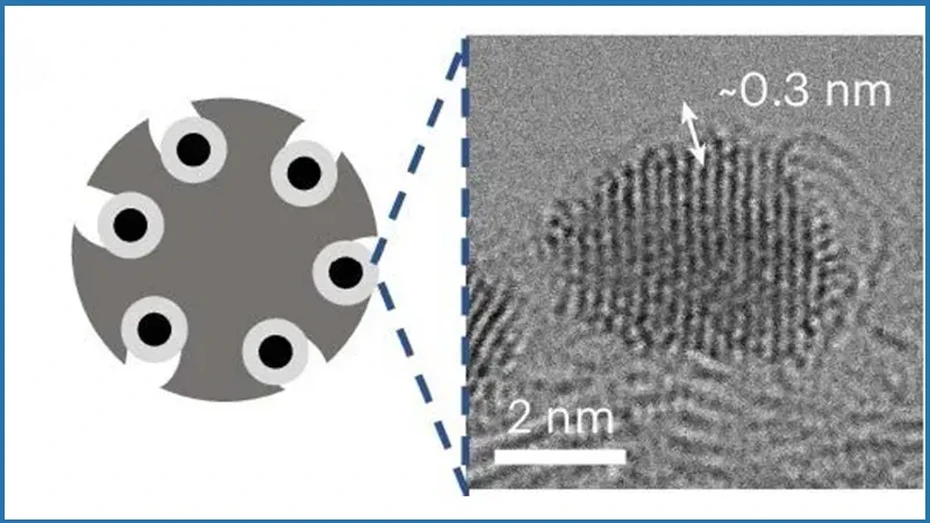Landmark Collaboration Leverages Re:Build Manufacturing’s Expertise and Ecolectro’s Breakthrough AEM Technology to Accelerate the Adoption of Low-Cost, U.S.-Made Renewable Hydrogen
ITHACA, N.Y. and FRAMINGHAM, Mass., May 07, 2025 (GLOBE NEWSWIRE) -- Ecolectro, a leading innovator in renewable hydrogen, and Re:Build Manufacturing, a company dedicated to revitalizing American manufacturing, today announced a strategic partnership to scale and deploy Ecolectro’s advanced anion exchange membrane (AEM) electrolyzers across the United States. Through this partnership, Re:Build will assemble Ecolectro’s electrolyzers, enabling rapid scaling and cost reductions for hydrogen production—an essential resource for hard-to-abate sectors such as refining, chemical production, transportation, heavy equipment, and industrial applications.
Ecolectro’s AEM electrolyzers eliminate costly precious metals including iridium and toxic PFAS “forever chemicals,” lowering production costs while delivering industry-leading durability and efficiency. By producing hydrogen on-site, these systems reduce transportation and storage costs, allowing customers in many regions—depending on electricity prices—to achieve a levelized cost below $2.50/kg, well under the DOE’s 2030 target of $3/kg.
"Renewable hydrogen is essential for decarbonizing industries, but high production and distribution costs have been a significant barrier to adoption," said Dr. Gabriel G. Rodríguez-Calero, CEO and co-founder of Ecolectro. "This partnership with Re:Build accelerates manufacturing, helping us deploy our electrolyzers at sites across the U.S. to make renewable hydrogen a scalable, cost-effective solution for industrial use, fueling stations, and energy storage. The partnership will allow us to deliver electrolyzers today, while maintaining a customer-driven and disciplined approach to manufacturing."
Re:Build and Ecolectro will produce initial electrolyzer units at Re:Build’s industrial system design and fabrication site in Rochester, N.Y. facilities for demonstration projects and early sales, with details to be announced later this year. Full-scale commercial assembly will occur at Re:Build’s state-of-the-art facility high-volume manufacturing facility in New Kensington, Pa., leveraging Pennsylvania’s steel industry—a key supplier for Ecolectro’s stacks.
While Re:Build will handle the integration and assembly, Ecolectro will continue manufacturing its proprietary chemistry, membranes, and membrane electrode assemblies (MEAs) in Ithaca, N.Y., expanding into a larger facility with support from the New York State Energy Research and Development Authority (NYSERDA), a critical early investor in the company. This collaboration creates jobs and strengthens clean energy manufacturing in the Appalachian region, driving industrial revitalization and economic growth in both New York and Pennsylvania.
"High-tech manufacturing is the backbone of tomorrow’s economy, and it’s critical that we develop robust domestic capabilities to support the next generation of hard-tech innovations," said Miles Arnone, CEO of Re:Build Manufacturing. "This collaboration with Ecolectro underscores the importance of building U.S. production capacity for groundbreaking solutions like renewable hydrogen, which will play a key role in shaping the clean energy future."
Officials in Pittsburgh and New Kensington see the partnership as a major economic win for the region’s emerging clean energy sector.
Jason Rigone, Executive Director of Westmoreland County Industrial Development Corporation stated: “We are proud to see cutting-edge hydrogen technology being built right here in New Kensington. This partnership creates hundreds of high-quality manufacturing jobs and strengthens American energy independence while also demonstrating that our manufacturing sector—which is thriving here in Westmoreland County—can compete with anyone. We’re excited that these Westmoreland-built advanced electrolyzers will help position our country as a leader in the hydrogen economy of the future.”
Why On-Site Renewable Hydrogen Matters
Hydrogen transportation and storage costs can add $5 to $7 per kilogram, increasing expenses by over $1 million annually for large users—Ecolectro’s AEM electrolyzers eliminate these inefficiencies. In addition, on-site production enables safer operation, significant cost savings, and allows customers to leverage federal and state tax credits directly.
Ecolectro successfully demonstrated this model with Liberty New York Gas through a pilot deployment in Massena, N.Y. The 10 kW system delivered hydrogen at less than $2.50/kg (at scale manufacturing costs)—up to 80% lower than the cost of delivered hydrogen. As a result, Liberty is expanding its planned deployment as commercial manufacturing scales.
"Our AEM technology enables the lowest-cost renewable hydrogen electrolyzers available today," said Dr. Kristina Hugar, Ecolectro’s Chief Technology Officer and co-founder. "After more than a decade of research at Cornell University and Ecolectro, we’re confident that our innovation will bring the U.S. closer to accessible and abundant hydrogen energy.”
Ecolectro’s growth is backed by strong industry and government support. The company received early investment from Starshot Capital, Toyota Ventures Climate Fund, Techstars, NY Ventures, Caygan Capital (through its founder Narushisa Nakagawa), and Energy Revolution Ventures, along with funding from Advanced Research Projects Agency–Energy (ARPA-E), the National Science Foundation (NSF), and the Department of Energy (DOE). In August, Ecolectro completed its Series A funding round, led by Toyota Ventures Climate Fund, with participation from Popular Bank’s Impact Fund, Cornell University, DNX, Starshot Capital, New Climate Ventures, NY Ventures and Techstars Ventures. This broad support reflects confidence in Ecolectro’s breakthrough AEM technology and accelerates its mission to make renewable hydrogen cost-effective and scalable.
About Ecolectro
Ecolectro is revolutionizing renewable hydrogen production with its low-cost, scalable AEM electrolyzers. By replacing precious metals and PFAS chemicals with abundant, recyclable materials, Ecolectro’s technology significantly reduces hydrogen production costs. Learn more at ecolectro.com.
About Re:Build Manufacturing
Re:Build Manufacturing is building a better future for its customers, employees, communities, and stakeholders by revitalizing America’s manufacturing base and creating meaningful, sustainable jobs in areas that have been deindustrialized. Close collaboration among our more than 1,100 employees – including over 400 engineers – and our expertise in product innovation, component production, systems production, and industrial automation enables us to solve complex multidisciplinary engineering and manufacturing challenges for our customers. Learn more at rebuildmanufacturing.com.
Media Contact
Launchsquad for Ecolectro
ecolectro@launchsquad.com



